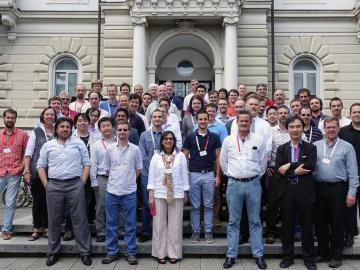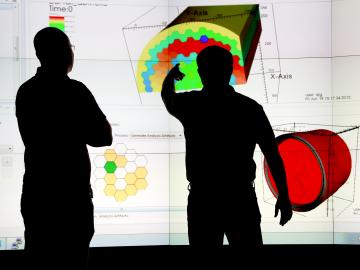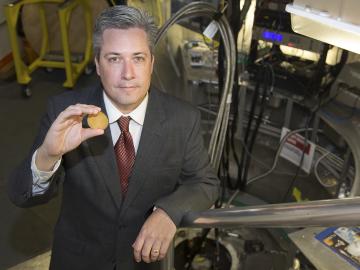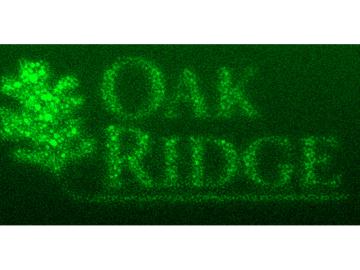Filter News
Area of Research
- (-) Materials (43)
- (-) Nuclear Science and Technology (6)
- (-) Supercomputing (12)
- Advanced Manufacturing (4)
- Biological Systems (4)
- Building Technologies (2)
- Chemistry and Physics at Interfaces (4)
- Clean Energy (51)
- Energy Frontier Research Centers (5)
- Fossil Energy (1)
- Functional Materials for Energy (4)
- Geographic Information Science and Technology (1)
- Isotope Development and Production (1)
- Materials Synthesis from Atoms to Systems (3)
- Materials Under Extremes (4)
- Neutron Science (8)
- Quantum Condensed Matter (1)
- Reactor Technology (1)
- Renewable Energy (1)
- Transportation Systems (3)
News Type
Media Contacts



Leaders in hybrid accelerated high-performance computing (HPC) in the United States (U.S.), Japan, and Switzerland have signed a memorandum of understanding (MOU) establishing an international institute dedicated to common goals

Researchers at the Department of Energy’s Oak Ridge National Laboratory have demonstrated that permanent magnets produced by additive manufacturing can outperform bonded magnets made using traditional techniques while conserving critical materials. Scientists fabric...




The lighter wand for your gas BBQ, a submarine’s sonar device and the ultrasound machine at your doctor’s office all rely on piezoelectric materials, which turn mechanical stress into electrical energy, and vice versa. In 1997, researchers developed piezoelectric...


The US Department of Energy announced today that it will invest $16 million over the next four years to accelerate the design of new materials through use of supercomputers.




